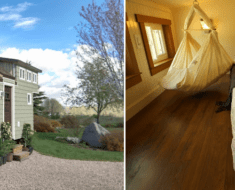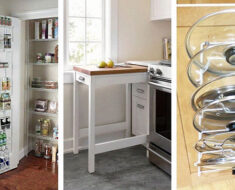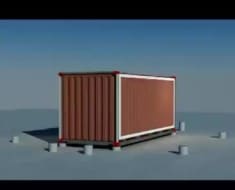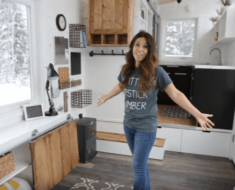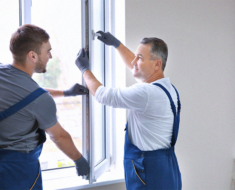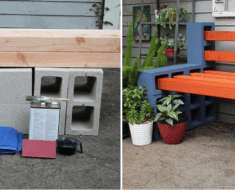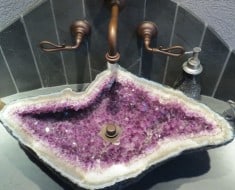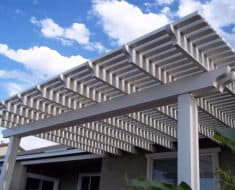
Low Impact Living
A house is more than simply a home to raise your family in; it’s also most likely to be the most valuable asset that you own. Even if you are not planning on selling your house yet, it’s worth investing in your home to help maintain and even improve its value.
However, not all home improvement projects are created equal. This article explores how you can add real value to your property; some are simply about the aesthetics, and others about maintenance, but all provide a high return on your investment.
1. Updating décor
You want your home to be comfortable and stylish, and redecorating is the most obvious way to update your home, but there is a sliding scale of what will add value. While minor imperfections on paintwork won’t impact the value of your home, some defects will influence its appeal:
- Moldy bathroom seals around the bath and shower
- Loose tiles
- Mold
- Peeling paintwork on windows
The good news is that an afternoon of DIY can resolve these issues, but you must identify why they are occurring. For example, mold is a sign the air is not circulating the room as it should; is there a problem with your HVAC? Explore why this is happening, and you will save yourself from future remedial costs.
How can I use interior design to add value to my home?
Here are five interior design options to boost the value of your home:
- Rather than following trends, think classy neutrals. Use accessories and soft furnishings to inject color instead.
- Decorate according to the style of home. For example, if you have a modern house, a traditional farmhouse kitchen may not work.
- Go the extra mile and make bathrooms luxurious.
- Highlight the house’s features, such as open fireplaces.
- Enhance natural light to make rooms appear more generous.
2. Structural issues
If you are going to spend money on your home, make sure there are no fundamental issues before you make any changes. If you have any hint, there are structural issues within the fabric of your property you must address them. A new kitchen, bathroom, or landscaped garden will never compensate for a house with structural problems.
How can I tell if my property has structural issues?
Sometimes structural issues are not glaringly obvious, but your house will be giving you subtle signs. Aside from visible cracks in the walls, creaking floorboards, doors that no longer appropriately shut and pictures that repeatedly don’t hang straight are indicators that you need to get professional advice. Do not delay. Ignoring the early signs of structural damage can mean that problems escalate from something fixable into permanent damage.
3. Updating services
Electrics
When was the last time you inspected your home’s services? According to the U.S. Fire Administration, nearly 26,000 home fires a year are caused by electrical fires. If you haven’t had your electrics tested within the last ten years, it’s time you did!
What are the signs of electrical system problems?
- Lights flickering or dimming periodically
- Discolored cords or plugs
- Light bulbs that keep blowing
- A burning smell
- You get electrical shocks from plugs
Plumbing
You should also inspect your plumbing and hot water options. Over time pipework can get furred up. You’ll know about it because you’ll hear the system rattling when you use your water. If you ignore these noises, you risk burst pipes, which can cause structural damage – not just cosmetic.
The solution is to replace your current hot water system with a highly efficient solar system. They are free to run (thanks to the power of the sun), and the modern design means they need little to no ongoing maintenance. Learn more at EuroSun.
4. Remodeling
Lifestyles have changed dramatically over the past few years, so many people find that their homes don’t work for them as they once did. Remodeling your home is a great way to make the most out of the space you and, if you do it well, it should add value to your home without the need for extending. Yes, it’s disruptive, but by the end of the project, you will have a house that meets your needs.
Do you need more storage space in the kitchen? Do you need access to the garage from the utility rather than the kitchen? Do you need a home office? Draw up a simple floorplan of your house and play around with different designs, moving walls, or doors to achieve an optimum layout.
Updating your home is more than just making it a more comfortable space to live in; it’s about preserving its value. With regular maintenance and upkeep, your home will not only look fabulous but be a highly desirable place to live too.






